Essential Guide to Maintaining Healthy Hooves
Keeping your horse’s hooves healthy is essential for their overall well-being. Hooves play a crucial role in a horse’s movement, balance, and comfort. Neglecting hoof care can lead to various problems such as lameness, infections, and discomfort for your equine companion. Therefore, understanding the significance of maintaining healthy hooves is vital for responsible horse owners.
In this blog, we will provide you with a step-by-step guide to hoof care for your horse. By following these practices, you can ensure that your horse’s hooves remain strong, resilient, and in optimal condition. Whether you are a new horse owner or have been caring for horses for years, this guide will offer valuable insights and practical tips to help you maintain your horse’s hoof health.
By investing time and effort into proper hoof care, you can prevent many hoof-related issues and contribute to your horse’s overall quality of life. So, let’s delve into the world of hoof care and discover the steps you can take to keep your horse’s hooves healthy and happy.
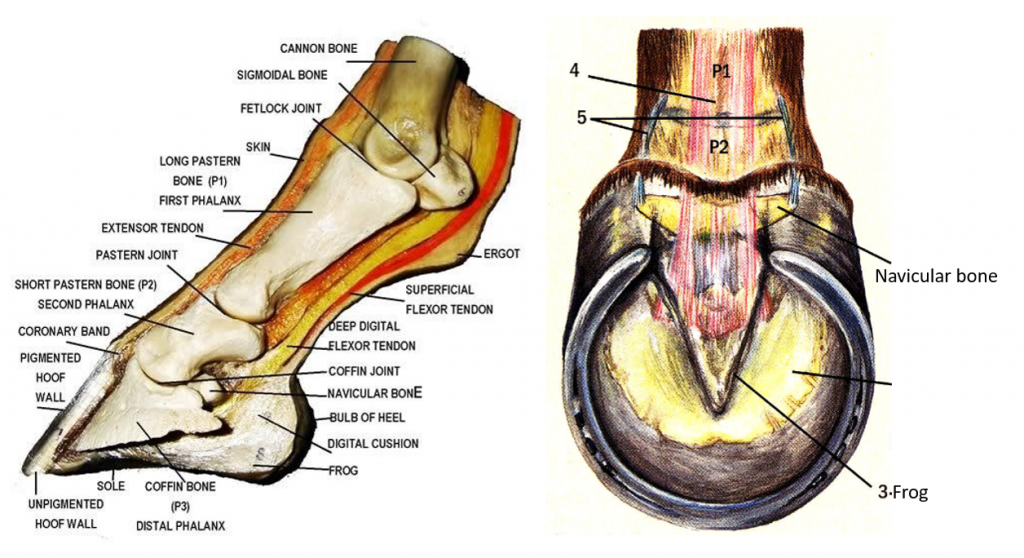
Understanding Hoof Anatomy
To properly care for your horse’s hooves, it’s essential to have a basic understanding of their structure and function. A horse’s hoof is a complex and remarkable organ that provides support, shock absorption, and traction. It consists of several key components that work together to maintain hoof health.
The outer layer of the hoof, known as the hoof wall, is a tough and protective structure made primarily of keratin. It forms a hard capsule around the sensitive internal structures of the hoof. The hoof wall is responsible for bearing the weight of the horse and protecting the sensitive laminae underneath.
Beneath the hoof wall lies the sensitive laminae, which connect the hoof wall to the underlying structures of the foot. The laminae provide essential support and nourishment to the hoof. Any damage or inflammation to the laminae can lead to painful conditions like laminitis.
The sole of the hoof is the concave area that supports the horse’s weight and provides protection against uneven terrain. It should be firm, but not overly hard or soft. Regular cleaning and trimming of the sole help prevent debris buildup and provide adequate support.
The frog, located at the back of the hoof, is a triangular-shaped structure that assists in shock absorption and traction. It should be pliable and healthy, as it helps the horse maintain balance and stability.
Understanding the anatomy of the hoof is crucial because it directly affects your horse’s movement, comfort, and overall soundness. Neglecting hoof health can lead to a range of issues, including hoof cracks, thrush, abscesses, and lameness. By prioritizing proper hoof care, you can minimize the risk of these common problems and ensure your horse’s well-being.
In the next sections, we will explore the step-by-step process of maintaining healthy hooves, including regular trimming, cleaning, and additional practices that contribute to optimal hoof health.

Daily Hoof Care Routine for healthy hooves
Maintaining a consistent daily hoof care routine is essential for promoting healthy hooves and preventing common hoof issues. By incorporating the following tasks into your daily routine, you can ensure that your horse’s hooves stay in optimal condition.
- Cleaning the Hooves: Start by cleaning your horse’s hooves thoroughly. Use a hoof pick to remove any dirt, debris, or compacted material lodged in the hoof, focusing on the frog, sole, and hoof wall. Regular cleaning prevents the accumulation of harmful bacteria and reduces the risk of infections.
- Inspecting for Signs of Trouble: While cleaning, closely inspect the hooves for any signs of abnormalities or issues. Look for cracks, splits, bruising, or any signs of inflammation. Check for foreign objects, such as stones or nails, that may have become lodged in the hoof. Early detection of problems allows for prompt intervention and treatment.
- Maintaining Proper Moisture Balance: Assess the moisture content of the hooves. Hooves that are excessively dry or overly moist can lead to problems like cracking or thrush, respectively. Apply hoof moisturizers or conditioners if the hooves are dry, and take steps to improve drainage or reduce moisture if the hooves are consistently wet.
- Checking Shoe Condition (if applicable): If your horse wears shoes, inspect the condition of the shoes and ensure they are secure. Look for any signs of loose nails, excessive wear, or damage. If necessary, schedule regular farrier visits for shoe maintenance and adjustments.
- Assessing Comfort and Soundness: Pay attention to your horse’s behavior and movement during the daily hoof care routine. If your horse shows signs of discomfort, such as favoring a particular hoof or showing sensitivity to touch, it may indicate a problem that requires further investigation by a veterinarian or farrier.
By incorporating these daily tasks into your routine, you can maintain clean and healthy hooves for your horse. Regular cleaning, inspection, and maintenance allow for early detection of issues and timely intervention, promoting optimal hoof health and overall well-being.
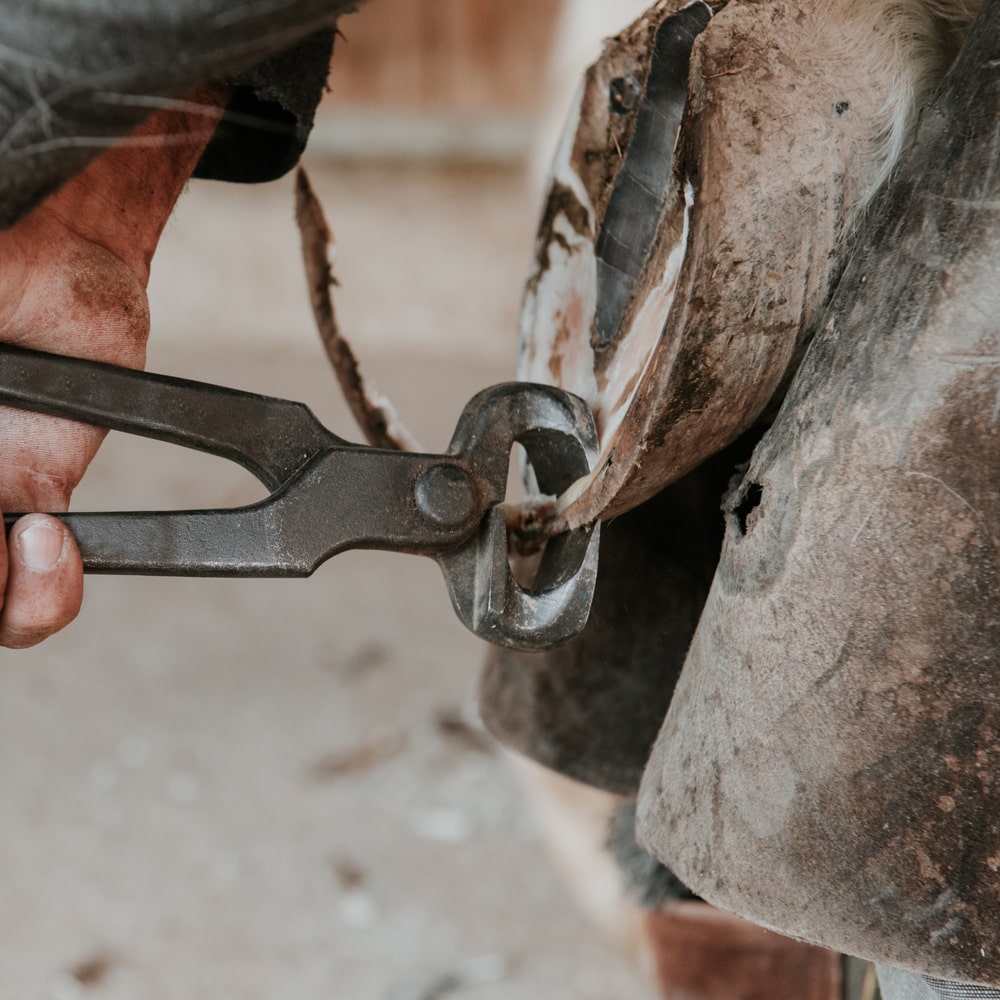
Proper Trimming and Maintenance
Regular hoof trimming by a qualified and experienced farrier is crucial for maintaining optimal hoof health and preventing common hoof problems. Proper trimming helps achieve balance, promotes proper weight distribution, and enhances the overall functionality of the hooves. Here’s why proper trimming is essential and how you can ensure your horse receives the best hoof care:
- Importance of Hoof Balance: Hoof balance refers to the correct alignment and proportions of the hoof structures, including the hoof wall, sole, frog, and heels. Proper balance ensures even weight distribution and minimizes stress on specific areas of the hoof. It helps prevent issues such as uneven wear, lameness, and joint problems.
- Prevention of Common Hoof Problems: Regular trimming helps prevent common hoof problems such as excessive hoof growth, long toes, underrun heels, and imbalanced hoof angles. These issues can lead to discomfort, lameness, and reduced performance. By maintaining proper hoof balance through regular trimming, you can minimize the risk of these problems and support your horse’s overall soundness.
- Finding a Reputable Farrier: It’s crucial to work with a qualified and reputable farrier who has expertise in hoof care. Seek recommendations from fellow horse owners, trainers, or veterinarians to find a farrier with a solid reputation for skill and professionalism. Ask about their training, experience, and commitment to ongoing education in the field of hoof care.
- Establishing a Trimming Schedule: Work with your farrier to establish a regular trimming schedule based on your horse’s individual needs. The frequency of trimming may vary depending on factors such as hoof growth rate, hoof quality, and the horse’s activity level. Typically, horses require trimming every 6 to 8 weeks, but it may vary for each horse. Regular communication with your farrier will help ensure that your horse’s hooves receive timely care and maintenance.
- Collaboration with Your Farrier: Develop a collaborative relationship with your farrier. Communicate openly about any concerns or observations regarding your horse’s hooves. Share information about the horse’s workload, diet, and any changes in behavior or soundness. This collaboration ensures that the farrier has a comprehensive understanding of your horse’s individual needs and can provide tailored hoof care.
Remember, proper trimming and maintenance contribute to the long-term health and soundness of your horse. By working closely with a reputable farrier and adhering to a regular trimming schedule, you can provide your horse with the necessary hoof care to support their overall well-being.
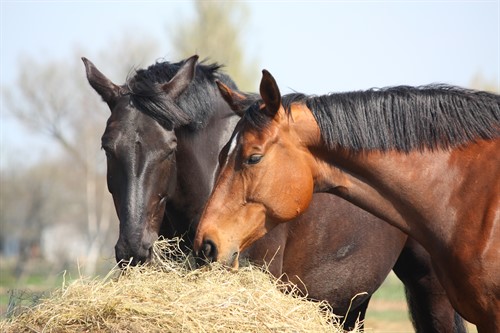
Balanced Diet for Hoof Health
The connection between nutrition and hoof health is vital. A balanced diet that provides essential nutrients is crucial for promoting strong and healthy hooves. Proper nutrition supports the growth and quality of hoof tissues, helping to prevent issues such as brittle hooves, slow growth, and hoof-related disorders. Here’s why a balanced diet is important and some recommendations for promoting hoof health through nutrition:
- Essential Nutrients: Hooves require specific nutrients to maintain their strength and integrity. These include proteins, amino acids, biotin, zinc, copper, methionine, and omega-3 fatty acids. Proteins and amino acids are the building blocks of hoof tissues, while biotin, zinc, and copper play key roles in hoof growth and strength. Methionine is an essential amino acid that contributes to the formation of strong hoof proteins. Omega-3 fatty acids have anti-inflammatory properties that support overall hoof health.
- High-Quality Forage: A horse’s diet should primarily consist of high-quality forage, such as grass or hay. Forage provides essential nutrients and fiber, which are important for overall health and digestion. It also supports proper hoof growth by providing a good foundation of nutrition.
- Balanced Concentrate Feed: In addition to forage, a balanced concentrate feed can be beneficial to ensure adequate nutrient intake. Look for feeds specifically formulated for hoof health that contain optimal levels of protein, amino acids, vitamins, and minerals. Consult with an equine nutritionist or veterinarian to determine the appropriate concentrate feed for your horse’s specific needs.
- Biotin and Other Supplements: Biotin is a commonly recognized supplement that supports hoof health. It plays a crucial role in the formation of keratin, a key component of hoof tissues. Biotin supplements can be added to the horse’s diet, typically in the range of 15-20 mg per day. However, it’s important to note that individual responses to biotin supplementation may vary. Consult with a veterinarian or equine nutritionist to determine the appropriate dosage and supplement options for your horse. Additionally, other supplements that contain essential nutrients for hoof health, such as zinc, copper, and omega-3 fatty acids, may also be recommended based on your horse’s specific needs.
- Adequate Water Intake: Proper hydration is essential for overall health, including hoof health. Ensure that your horse has access to clean and fresh water at all times. Sufficient water intake supports optimal digestion and nutrient absorption, which indirectly contributes to hoof health.
A balanced diet tailored to your horse’s individual needs is key to promoting healthy hooves. Consult with an equine nutritionist or veterinarian to develop a nutrition plan that addresses your horse’s specific requirements. Regularly evaluate your horse’s body condition and adjust the diet as necessary to maintain optimal hoof health.
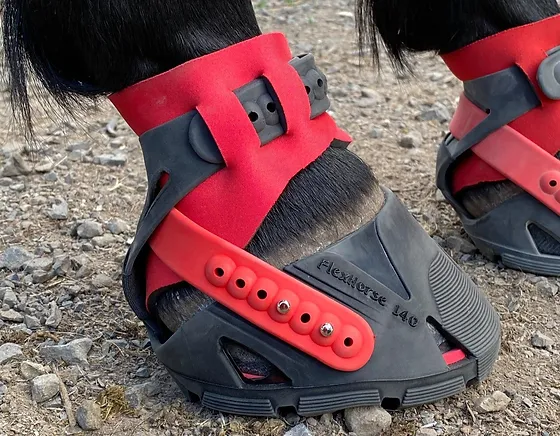
Protective Measures
Protecting your horse’s hooves from injuries and damage is crucial for maintaining their health and soundness. Implementing appropriate protective measures can help prevent hoof problems and support overall hoof well-being. Here are some important considerations and tips for protecting your horse’s hooves:
- Hoof Boots: Hoof boots are a valuable tool for providing temporary protection and support to the hooves, especially during activities such as riding on rough terrain or participating in disciplines that put additional stress on the hooves. These boots offer cushioning, shock absorption, and protection against impacts. They can be particularly useful for horses with thin soles, hoof sensitivity, or during the transition to barefoot. Select boots that fit properly and provide adequate support for your horse’s specific needs.
- Hoof Wraps and Bandages: Hoof wraps and bandages can be used to protect the hooves and provide additional support during injury recovery or in situations where extra protection is needed. They help stabilize the hoof, protect it from external elements, and provide a clean environment for healing. When using wraps or bandages, ensure they are applied correctly and securely to avoid interference with blood circulation or causing discomfort.
Environmental Management
Proper management of the horse’s living environment is essential for hoof health. Consider the following tips:
- Pasture and Turnout: Provide well-maintained, clean, and safe turnout areas for your horse. Avoid areas with excessive mud, standing water, or sharp objects that can cause hoof injuries. Regularly inspect the pasture for any hazards that could potentially harm the hooves.
- Stalls and Bedding: Maintain clean and dry stalls to minimize the risk of hoof infections or conditions like thrush. Use suitable bedding material that provides adequate cushioning and absorbs moisture effectively.
- Regular Exercise: Regular exercise on varied terrain can help promote healthy hoof development and strength. Controlled exercise helps stimulate proper blood circulation within the hooves, supporting overall hoof health.
- Farrier Consultation: Regular consultations with a qualified farrier are essential for hoof health. Discuss your horse’s specific needs and consider seeking advice on additional protective measures tailored to your horse’s individual requirements.
Every horse is unique, and their hoof care needs will vary. It’s important to consider your horse’s individual circumstances, activities, and any specific hoof issues they may have when implementing protective measures. Regularly evaluate the effectiveness of these measures and make adjustments as necessary to ensure optimal hoof health and protection.
Recognizing and Addressing Hoof Problems
Maintaining a vigilant eye on your horse’s hooves is crucial for identifying and addressing any potential problems promptly. Catching hoof issues early allows for timely intervention and can prevent further complications. Here are some common hoof problems to be aware of, their signs and symptoms, and guidelines for seeking professional help:
- Thrush: Thrush is a bacterial infection of the frog, characterized by a foul odor, black discharge, and a soft, crumbling frog. Regularly clean and dry the hooves, paying special attention to the frog area. If thrush is detected, consult your veterinarian or farrier for appropriate treatment options, such as antimicrobial hoof treatments.
- Laminitis: Laminitis is a painful condition affecting the laminae within the hoof, leading to inflammation and potential rotation of the coffin bone. Signs of laminitis include lameness, heat in the hooves, increased digital pulse, reluctance to move, and a stretched-forward stance. If laminitis is suspected, contact your veterinarian immediately for a thorough examination and guidance on pain management and treatment strategies.
- Abscesses: Hoof abscesses can occur due to bacterial infection within the hoof, resulting in severe pain and lameness. Signs include sudden, severe lameness, heat in the affected area, and increased digital pulse. If you suspect an abscess, contact your veterinarian or farrier for evaluation and proper drainage techniques to alleviate the pain and promote healing.
- Hoof Cracks: Hoof cracks can vary in severity, ranging from superficial surface cracks to deep, structural cracks that compromise the hoof’s integrity. Regular hoof care and maintenance, along with proper trimming, can help prevent and manage minor cracks. However, deep or severe cracks may require professional attention. Consult with your farrier or veterinarian to determine the appropriate treatment and management approach.
- White Line Disease: White Line Disease is a fungal or bacterial infection that weakens the hoof wall’s inner layers, leading to separation and deterioration. Signs include a visible separation or chalky appearance along the white line area, along with potential foul odor and lameness. Seek veterinary or farrier guidance for proper treatment, which may involve meticulous cleaning, debridement, and topical antifungal or antibacterial treatments.
- Hoof Bruising: Bruising of the hoof can occur due to trauma or excessive concussion, resulting in tenderness, localized heat, and possible lameness. If you suspect hoof bruising, provide rest and contact your veterinarian for assessment. They may recommend further diagnostics, such as hoof testers or radiographs, and guide pain management and treatment.
Early detection and intervention are crucial in addressing hoof problems effectively. Regularly inspect your horse’s hooves during daily care routines, and if you notice any signs of discomfort, lameness, or abnormalities, consult with a qualified veterinarian or farrier for an accurate diagnosis and appropriate treatment plan.
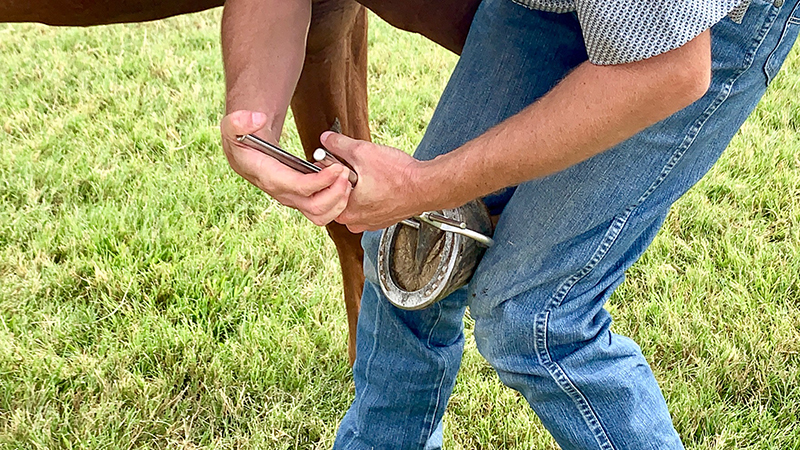
Regular Veterinary Care
Regular veterinary check-ups play a crucial role in maintaining the overall health and well-being of your horse, including their hoof health. While daily hoof care routines and proper management practices are essential, the expertise of a veterinarian is invaluable in assessing and addressing specific hoof conditions. Here’s why regular veterinary care is important for optimal hoof health:
- Comprehensive Assessment: A veterinarian possesses the knowledge and experience to perform a thorough examination of your horse’s hooves. They will evaluate the overall hoof condition, check for signs of inflammation, infections, structural abnormalities, or any other issues that may not be readily apparent to an untrained eye. This comprehensive assessment allows for early detection and timely intervention, preventing minor problems from escalating into more significant complications.
- Diagnostic Tools and Techniques: Veterinarians have access to specialized diagnostic tools and techniques that can aid in assessing hoof health. These may include hoof testers to assess sensitivity, radiography to evaluate internal structures, thermography to detect areas of inflammation, or advanced imaging techniques like MRI or ultrasound to examine specific hoof regions in greater detail. These diagnostic methods provide valuable insights into the underlying causes of hoof problems and help guide appropriate treatment plans.
- Treatment and Management Plans: Should any hoof issues be identified, a veterinarian can provide tailored treatment and management plans based on their expertise and diagnostic findings. They may recommend specific therapies, such as corrective shoeing or trimming techniques, topical medications, nutritional adjustments, or the use of supportive hoof supplements. Their guidance ensures that the chosen interventions are appropriate for your horse’s individual needs and promote optimal healing and hoof health.
- Long-Term Monitoring: Regular veterinary care also facilitates long-term monitoring of your horse’s hoof health. By establishing a relationship with a trusted veterinarian, you can schedule periodic check-ups to assess the progress of any ongoing hoof conditions, evaluate the effectiveness of treatment plans, and make necessary adjustments based on your horse’s response. This proactive approach helps identify and address any emerging issues before they become more challenging to manage.
Establishing a partnership with a trusted veterinarian who has experience and expertise in equine hoof health is crucial. They can work collaboratively with you, providing guidance, answering your questions, and offering valuable insights into preventive measures to maintain optimal hoof health.
Remember, hoof health is interconnected with overall horse health, and regular veterinary care ensures a holistic approach to your horse’s well-being. By incorporating regular veterinary check-ups into your horse care routine, you take a proactive step towards preventing and addressing hoof problems effectively, leading to better long-term hoof health and overall soundness for your equine companion.
In the next section, we will discuss preventative measures and best practices that horse owners can implement to support and maintain healthy hooves.
Conclusion
In this comprehensive guide to healthy hoof care for your horse, we have covered essential aspects of hoof maintenance and emphasized the importance of a step-by-step approach. Let’s recap the key points discussed:
- Understanding Hoof Anatomy: By understanding the structure and function of a horse’s hoof, we recognize its vital role in proper movement and weight-bearing. Neglecting hoof health can lead to various hoof problems, affecting your horse’s overall well-being.
- Daily Hoof Care Routine: A regular daily hoof care routine is essential for maintaining healthy hooves. Cleaning, picking, and inspecting the hooves daily help identify any signs of injury, infection, or discomfort early on.
- Proper Trimming and Maintenance: Regular hoof trimming by a qualified farrier is crucial for balanced hooves and the prevention of common hoof problems. Establishing a relationship with a reputable farrier and adhering to a trimming schedule is key to maintaining optimal hoof health.
- Balanced Diet for Hoof Health: Nutrition plays a significant role in hoof health. A balanced diet rich in essential nutrients supports the growth and strength of hooves. Consider incorporating dietary supplements specifically formulated for hoof health into your horse’s feeding regimen.
- Protective Measures: Implementing protective measures, such as hoof boots, wraps, and proper management practices, can prevent hoof injuries and damage. These measures are particularly important when managing horses in various environmental conditions.
- Recognizing and Addressing Hoof Problems: Early recognition and prompt veterinary intervention are critical in addressing common hoof problems. Regular observation and vigilance enable you to identify signs and symptoms of hoof issues, ensuring timely professional help.
- Regular Veterinary Care: Partnering with a trusted veterinarian who specializes in equine hoof health is paramount. Regular veterinary check-ups allow for comprehensive assessments, access to diagnostic tools, tailored treatment plans, and long-term monitoring of hoof health.
By following this step-by-step guide and implementing the recommended practices, you are taking proactive measures to support your horse’s overall health and well-being through proper hoof care. Remember, healthy hooves contribute to soundness, comfort, and performance.
We encourage you to incorporate these guidelines into your horse care routine and seek professional guidance when necessary. By prioritizing your horse’s hoof health, you ensure they have a solid foundation for a happy, active, and fulfilling life.
FAQ
Healthy hooves have strong heels, bars and supportive heel buttresses. They have healthy frogs that are thick and callused which help give the hoof concussion and soften the impact of the horse’s hoof as it moves. It should extend around 60% of the sole length and be free of any infection. There should be no cracks on the hoof wall and the hoof should be balanced and even on both sides when looking at your horse’s hoof from the front.
Horses do not always require shoes. Whenever possible good trimming keeping in mind the work that your horse does, for at least part of the year, is very good for your horse’s hoof. Horseshoes do have their place and can help prevent wear and tear and injury to the hoof and can help with more traction when in competition.
Because the horseshoe is attached to your horse’s hoof with nails, as the hoof grows the nails get loose and the horseshoe gets loose too and needs to be removed, the horse’s hoof trimmed and a new shoe nailed on. Typically this is done every six weeks.
Trimming a horse’s hoof is exactly like us cutting our nails, the area where the farrier trims do not have nerves and is painless. Just like our nails, the farrier has to be careful to not trim off too much hoof or when putting on your horse’s shoe, to keep the nails from going into the sensitive area of the hoof.
Poor hoof care can make your horse more prone to flaring, chipping, and hoof defects which can cause long-term lameness. Your horse could get fungal infections, sole bruises, and hoof abscesses.
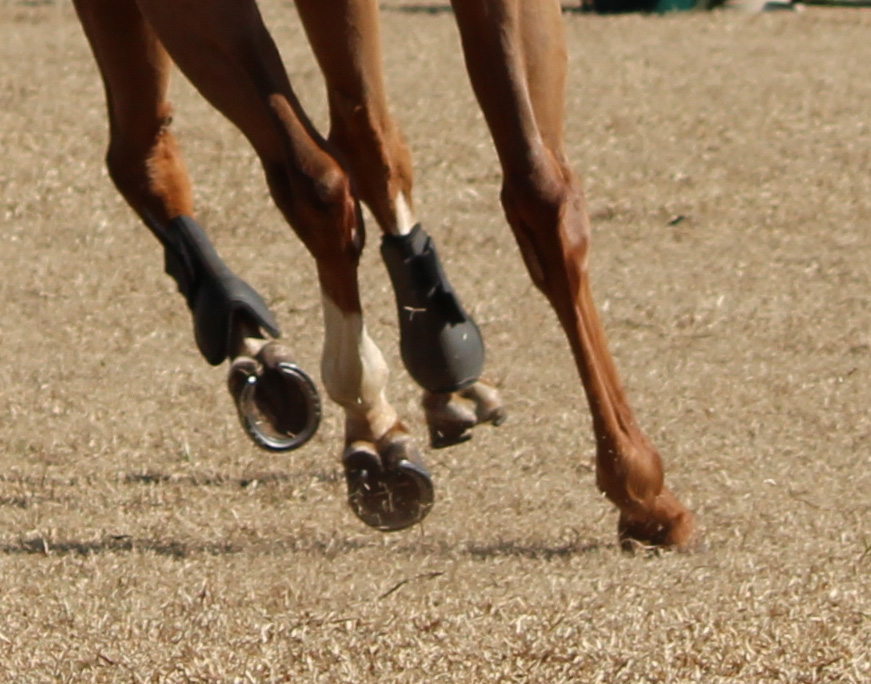
Further reading
Caring for your horse’s hoovesTie your horse and practice picking up their feet. You should pick out each hoof daily. Never tolerate kicking, biting, leaning or pulling the leg away.
Tips & tricks on hoof care from the world’s best grooms— Keratex is good for strengthening, while Thrush Buster is good for frog issues. Greasing daily keeps the hooves from drying out. After jumping …
Essential hoof care for horses— Apply hoof oil every other day during the summer to help prevent splits and cracks · Pick out feet every day with a hoof pick · Check shoes for …
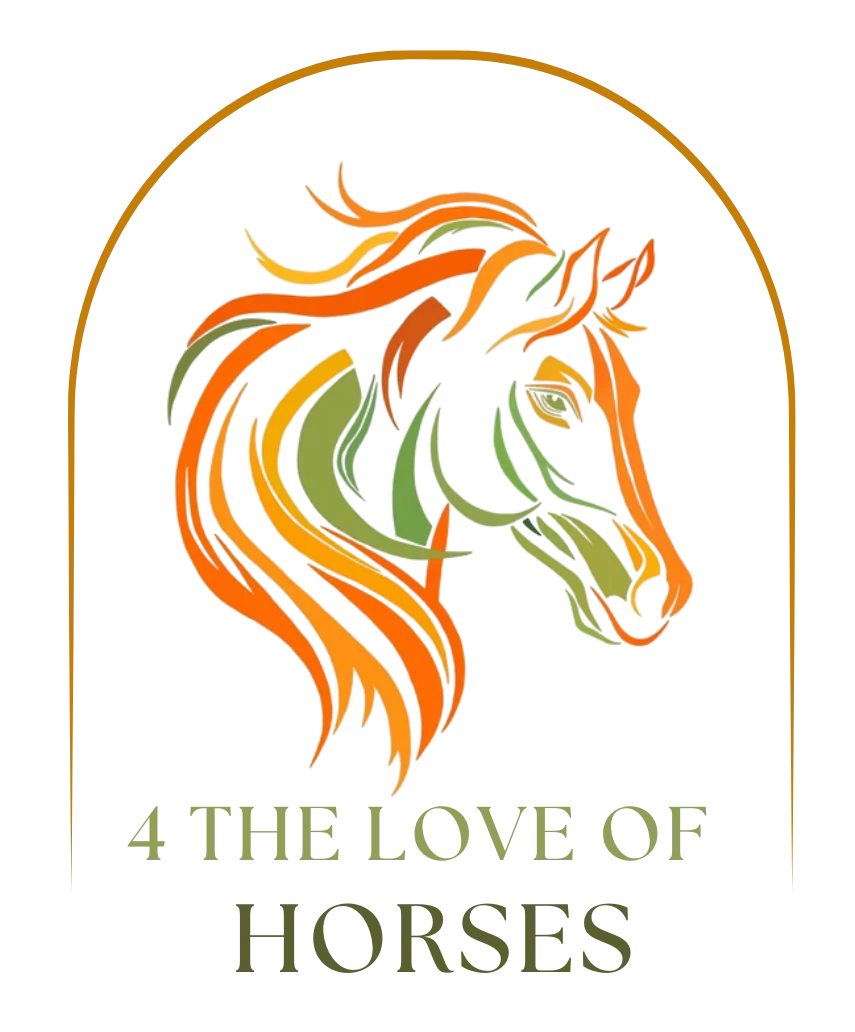
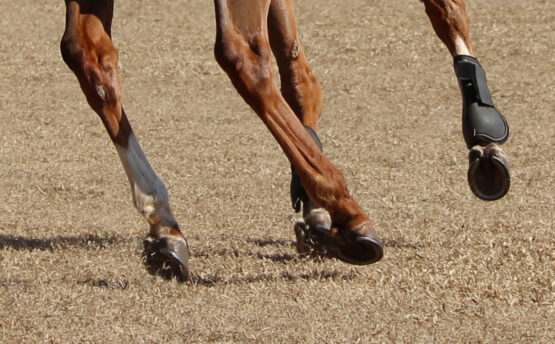
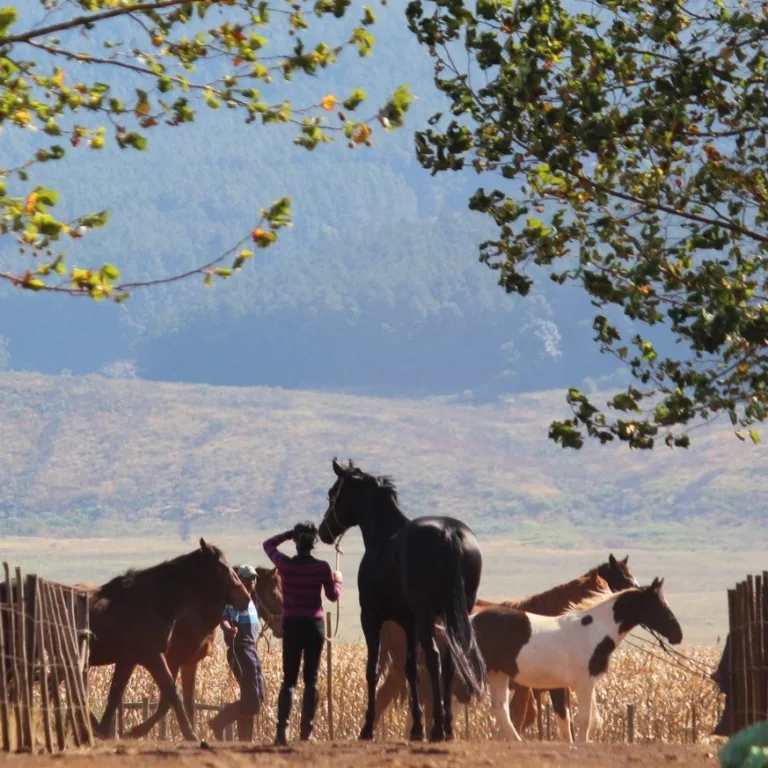
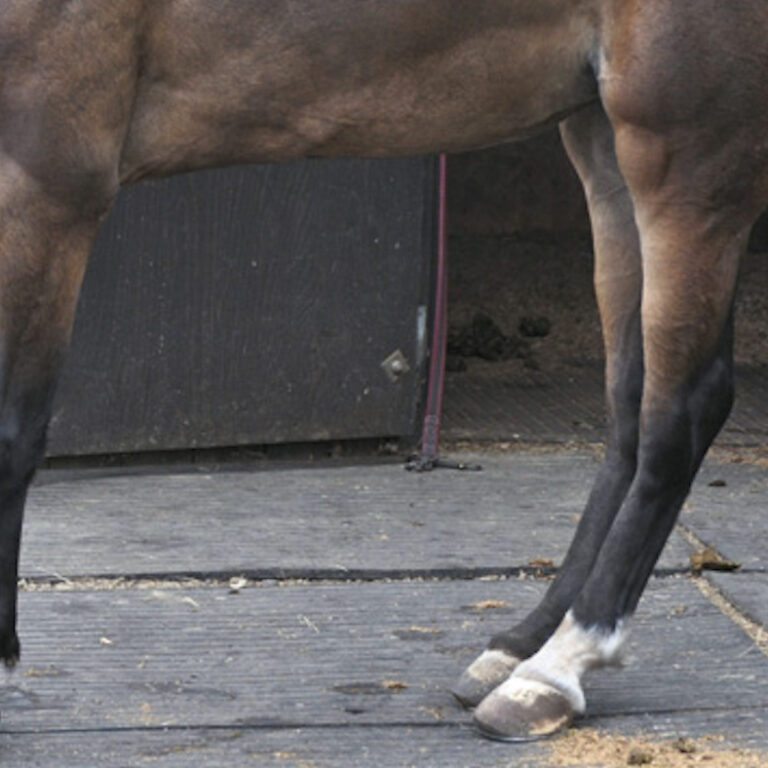
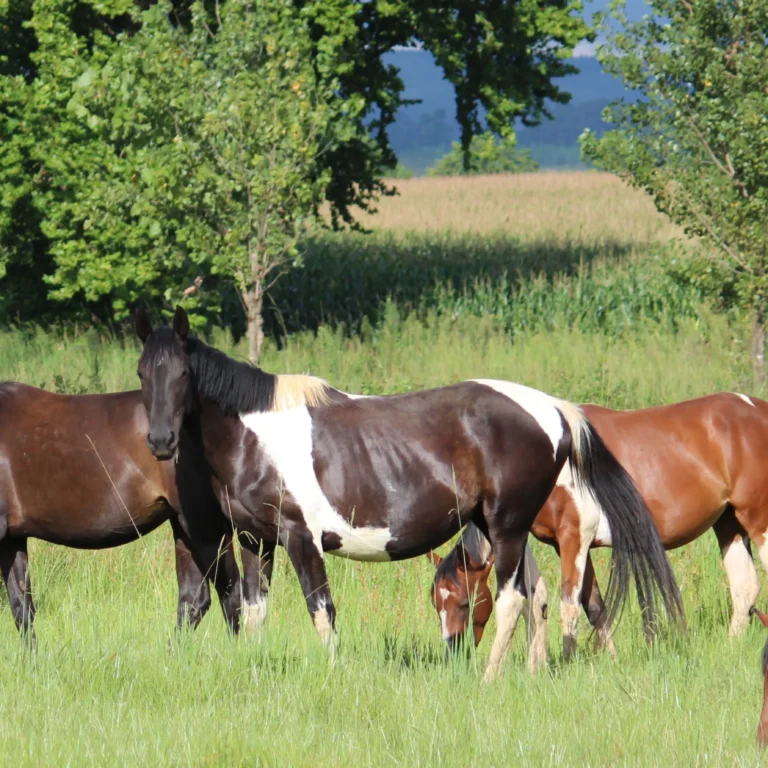

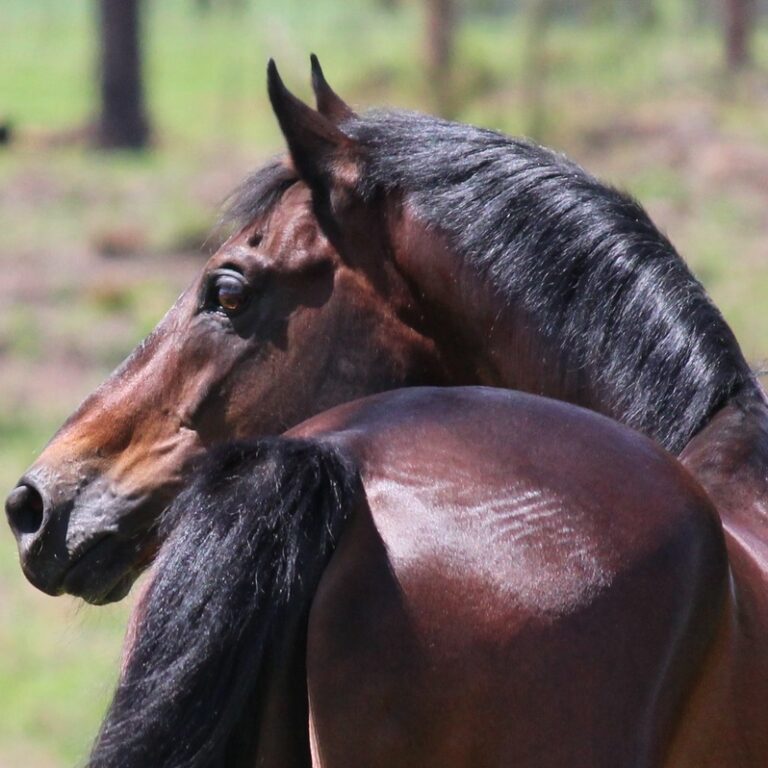
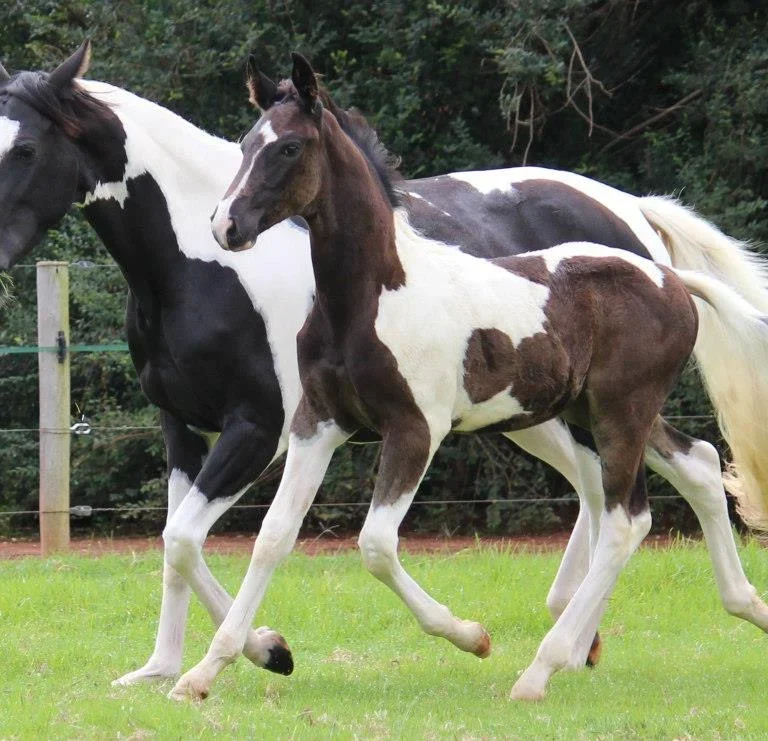
2 Comments